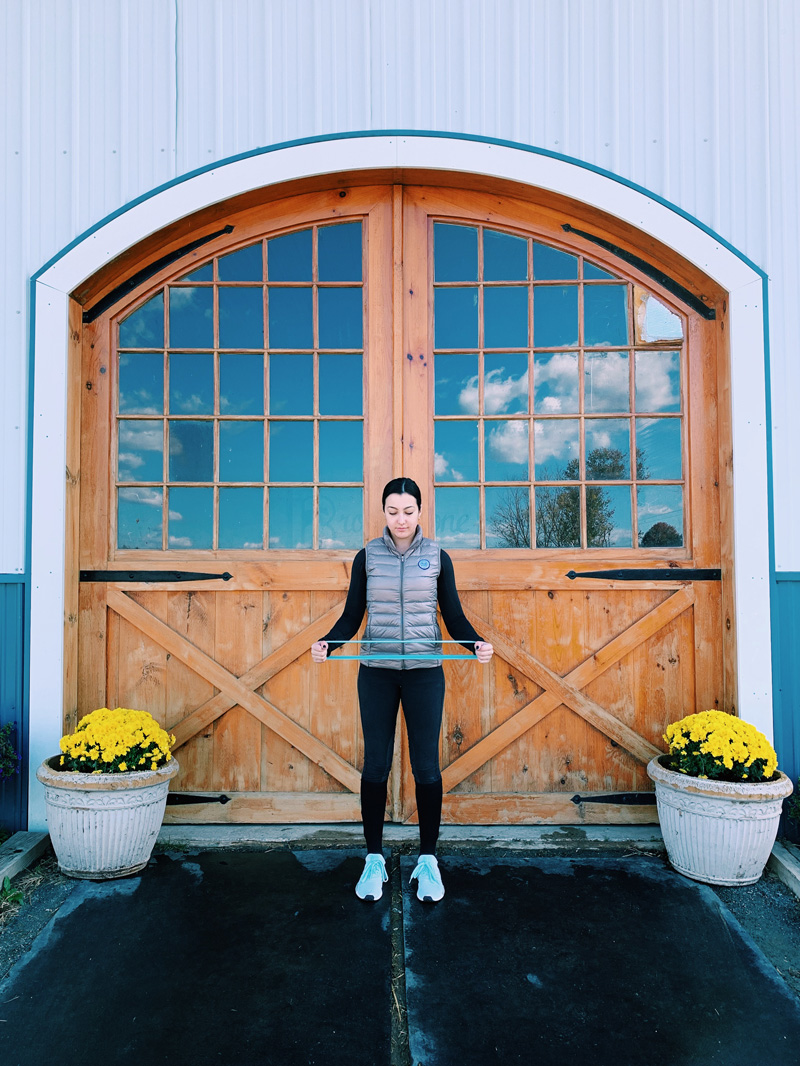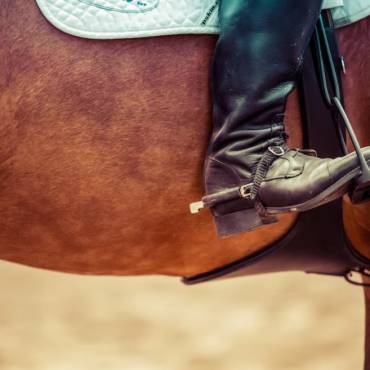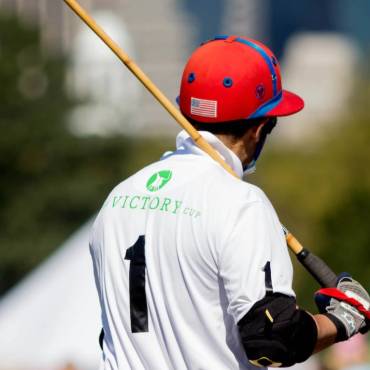In your riding lessons, have you ever heard your instructor repeat the same correction, over and over, but felt too weak to maintain it? Can you identify aspects of your own riding position or technique that you wish you could improve? Do you ever feel as though no matter how hard you try, certain position edits just seem to elude you?
If you answered yes to any or all of the previous questions, then you might benefit from cross-training exercises. Lauren Mahr, founder and owner of The Fit Equestrian LLC, has developed a series of workouts and nutrition guides to complement mounted instruction programs. Mahr is a National Academy of Sports Medicine-certified personal trainer and avid amateur hunter rider who returned to the sport after a hiatus of nearly a decade, and she believes that the targeted use of specific unmounted exercises will reap big rewards when you get in the saddle.
Here Mahr shares some of her favorite exercises to address five of the most common rider faults: rounded shoulders, pinching with the knee, heels not down, unevenness and asymmetry, and a swinging lower leg.
Fault # 1: Rounded Shoulders
Solution: Blade Squeezes
Correcting rounded shoulders is often about learning to engage your deltoids, which are the muscles located on the back of the shoulder blades—but it also requires learning to engage your core.
“The core is really important,” says Mahr. “When you engage your core and engage your deltoids, you can’t really slouch.”
Blade squeezes can help to develop this feeling of deltoid and core engagement. Stand tall or sit on the edge of a chair with your core engaged and shoulders back. Loop a resistance band around your wrists and hold your arms just like you would in a saddle, with your elbows at your sides, hands out in front of you and thumbs up.
“Draw your hands outward, keeping your elbows close to your sides and squeezing your shoulder blades together,” says Mahr. “Make sure to keep your shoulders down and neck in its natural position throughout the movements. Hold the squeeze for two to three seconds, and repeat 10 to 15 times.”
Fault # 2: Pinching With The Knee
Solution: Hip Flexor Stretch
Pinching with the knee is a frustrating-to-solve rider challenge that is often the result of having a tight hip flexor.
“If your hip is loose and working properly, the leg can hang down,” says Mahr. “Using a hip flexor stretch will allow you to drop down and engage the muscles more correctly.”
There are many variations of hip flexor stretches, but here is one of Mahr’s favorites. She recommends using a yoga mat or carpet to protect your knees.
“Kneel on your left knee, and place your right foot flat on the floor in front of you,” says Mahr. “Your right knee should make a 90-degree angle. Keep your back straight, shoulders back and core engaged during this stretch. Lean forward, keeping your right foot flat on the ground.”
You should feel a gentle stretch on the front of your left hip. Hold for 30-60 seconds, and repeat on the other side.
Fault # 3: Heels Not Down
Solution: Ankle Flexions
Not being able to keep the heels down is often attributed to tight calf muscles, and so one of the most frequently prescribed unmounted exercises to address this fault is to stand on a stair. Place the ball of the foot on the edge of the tread as though it is in a stirrup. From here, drop your heel down, and you should feel a stretch in the calf muscle almost instantly.
But there are other exercises that can address this problem area, and one of Mahr’s favorites helps to develop the strength of the muscles on the front of the shin.
“We always want to counter flexibility with strength,” says Mahr. “This exercise will help riders to have the strength to draw the toe up, not just the flexibility to drop the heel down.”
While sitting on the ground with your legs extended, loop your resistance band around the ball of your foot and keep hold of the other end. Slowly flex your ankle by bringing your toe back towards your body. Complete 10 to 15 repetitions.
“You should feel the muscles in your shin engaging to draw your toe towards you,” says Mahr.
Fault # 4: Unevenness And Asymmetry
Solution: One-Sided Exercises
All riders, to some extent, are imbalanced in their bodies. We’re stronger on one side than the other and sometimes tip in or out, further adding to the imbalance. One of the best ways to counter this during your workout routine is to practice lots of single-legged or -armed exercises.
“If we do exercises with both legs and arms, the stronger one will do most of the work and will perpetuate unevenness,” says Mahr. “It’s better to do one side, then the other.”
But equally important are exercises that strengthen the core—especially if the rider leans.
“Having a strong core will keep the body centered,” says Mahr.
Fault #5: Swinging Lower Leg
Solution: Calf Raises
Having a swinging lower leg means that the rider is at risk of losing her balance and can interfere with the effective application of the aids. Especially when you only ride one horse per day, it can be hard to build enough strength to really hold the lower leg in position. Mahr likes calf raises for unmounted strength building.
“Stand on the ground or the edge of a step,” says Mahr. “Stand tall with your core engaged and your shoulders back. Raise your heels off the ground so you are on your tiptoes. Hold for a moment, and lower back down slowly.”
Add difficulty by holding dumbbells or any weighted object you can find around the house. Complete three sets of 10 to 15 repetitions. Calf raises do a great job of strengthening the calf muscle, but Mahr cautions that in some cases, it is possible to overdo.
“It is important to have these muscles strong,” says Mahr. “But if you do [calf raises] too much, you may start to grip with the back of the calf and point your toes out.”
To prevent this fault, Mahr recommends adding in no-stirrup work at the sitting trot and the canter, building to posting trot if you’re able.
“The key is to be mindful of how your lower leg is positioned on the horse’s side,” says Mahr.
Jumping low jumps without stirrups can also help to strengthen and stabilize a swinging lower leg.
Lauren Mahr, founder and owner at The Fit Equestrian LLC, has fused her passion for health and wellness with her equestrian expertise to create one of the top-selling equestrian fitness programs in the country. She’s based in southeastern Pennsylvania, where she enjoys competing her horse Texas in the adult amateur hunters. The Fit Equestrian offers exercise and nutrition guides designed to help riders learn to cross train while treating themselves like athletes.
Photos: The Fit Equestrian
Original article: https://www.chronofhorse.com/article/from-the-magazine-5-fixes-from-the-fit-equestrian









Add Comment